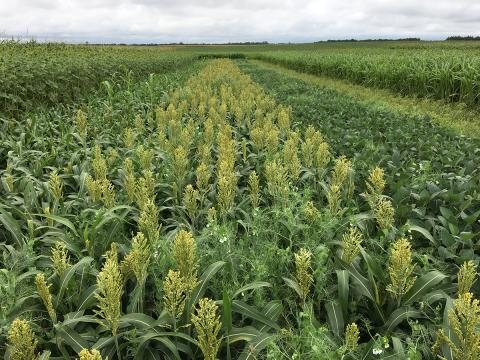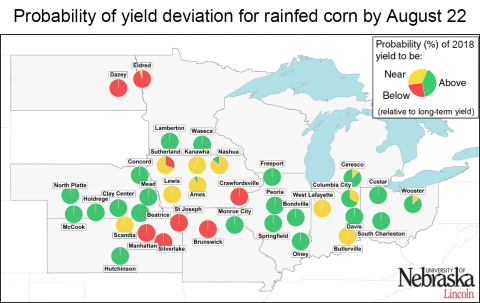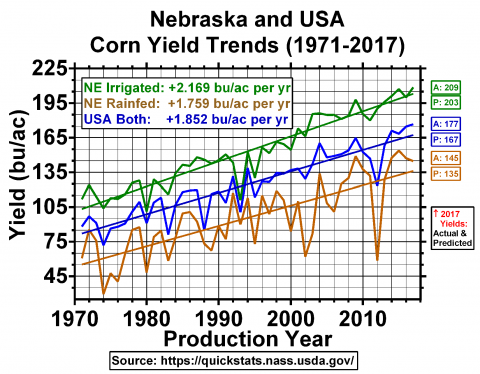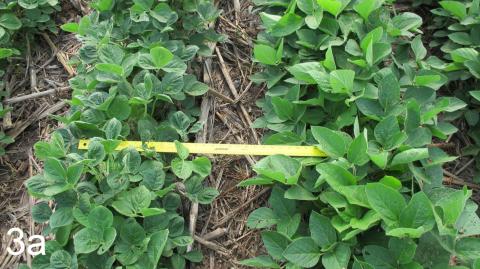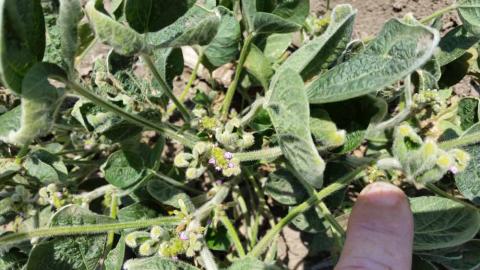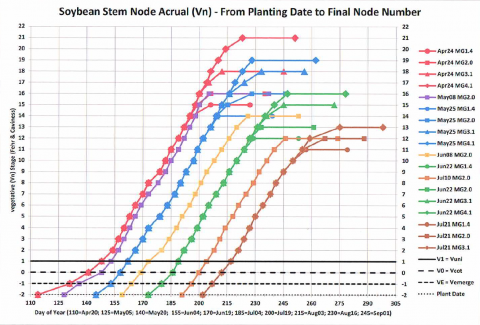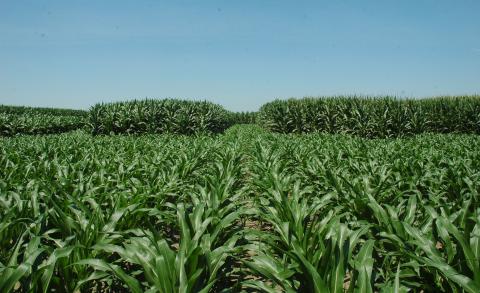Double Cropping Pulses with Short-Season Crops, Forages, and Cover Crops in Eastern Nebraska
September 6, 2018
A research project in eastern Nebraska is evaluating a double crop production system as a potential alternative to the traditional corn/soybean rotation. Following an early season crop of yellow field peas, short-season crops (corn, soybean, grain sorghum, millet and sunflower) and annual forages (forage sorghum and sorghum-Sudangrass) were planted.
Aug. 22 Corn Yield Forecast: Shorter Crop Cycle Did Not Lead to Below-Average Yield
August 23, 2018
Corn progress and yield forecasts for 41 sites across the Corn Belt indicate near- or above-average yields for most sites. High temperatures early in the season increased the rate of corn development and led to a shorter crop cycle, but do not appear to have diminished yields.
Soybean and Corn Yield and Acreage Trends
August 15, 2018
Nebraska soybean and corn yields have steadily increased from 1971 to 2017 in both irrigated and rainfed production systems. Nebraska irrigated soybean increased at a linear linear rate of 0.68 bu/ac, and irrigated corn increased at a rate of 2.17 bu/ac.
Field Case Study of Dicamba-Injured Soybeans using Forensic Analysis
August 8, 2018
A field of dicamba-injured soybeans is used as an example to demonstrate the forensic analysis method to determine when dicamba exposure occurred.
2018 Corn Yield Forecasts: Physiological Maturity Expected Before Historical Averages
August 2, 2018
Corn growth simulations across the Corn Belt indicate early corn maturity of one to two weeks for most sites. Simulated corn yields for rainfed and irrigated sites across the region near or above normal at most sites.
Understanding Growth Regulator Herbicide Injury
July 19, 2018
There are now five structurally different growth regulator herbicides, each of which affects plant growth differently. Understanding the differences can help you better identify the cause when you find damage in your field.
Are Your Soybean Plants Exhibiting Dicamba-Induced Leaf Injury?
July 19, 2018
Learn how to examine plant development and use this forensic strategy to determine the approximate calendar date when the plants in your field were likely exposed to dicamba.
2018 Corn Yield Forecasts as of July 11: Higher Temperature Led To Faster Corn Development
July 13, 2018
Corn yield forecasts and crop growth stage estimates for the US Corn Belt, based on crop modeling and local input, start up this week for 2018. Corn development is well ahead of normal, with most sites in the central and southern fringes of the Corn Belt in the silking or grain-filling stages.

